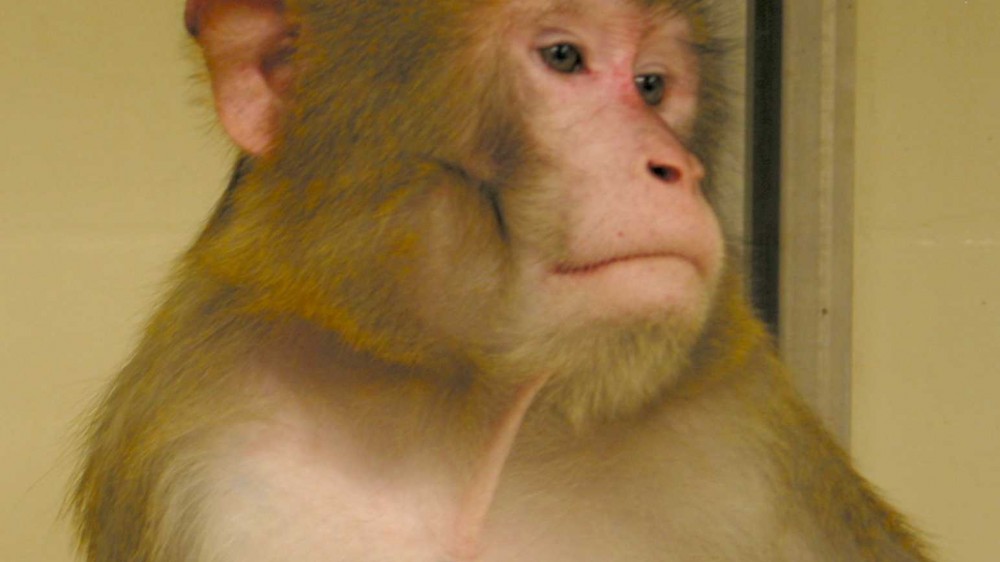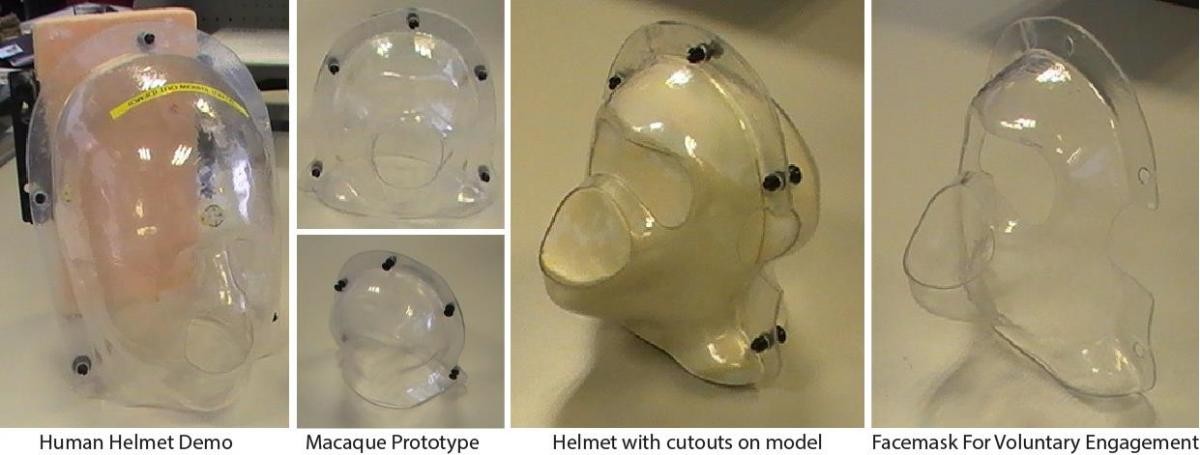Head mask for cancer patients adapted as a refinement for primate research

A study published recently in Journal of Neuroscience Methods describes a new Non-invasive Head Immobilisation System (NHIS) for macaque monkeys used in neurobiology research.
The work, led by Heather Slater in the laboratory of Professor Christopher Petkov from Newcastle University, and colleagues, is a result of an NC3Rs-funded pilot grant.
The new system is an alternative to surgically implanted head posts, used by many neuroscience laboratories that require head immobilisation to allow brain activity to be monitored. While providing stable head restraint, surgical implanted devices carry a risk of infection and can become unstable or fail over time. A number of non-invasive systems have been developed in the past but their uptake has been limited. Rather than trying a ‘one size fits all’ approach, the researchers looked at what can be learned from procedures with humans, which rely almost exclusively on personalised, non-invasive head restraint techniques. For example, cancer radiotherapy units have become experts at providing precise, individually customised head immobilisation options for adult and children cancer patients. Professor Petkov and colleagues wanted to tap into this expertise.
Together with the Cancer Radiotherapy Unit at the Freeman Hospital in Newcastle, the team developed and evaluated their new system, consisting of a customised-to-fit facemask that can be used separately or combined with a back piece to form a full-head helmet (see photo). The device is made of see-through plastic with holes for eyes and ears, allowing presentation of visual and auditory stimuli for neurobiological studies.

Importantly, for the first time the system has an option for automated training for voluntary engagement with the facemask, as a first step to habituating the animal to the full immobilisation using the helmet. The mask provides mouth access for rewards, and the training phase makes the process less distressing for the animal. The researchers also looked at the formation of ‘hot spots’, areas with increased pressure or contact between the animal’s head and the plastic, which can become sore and potentially infected. They used an infra-red thermal imaging system to monitor potential hot spots, and showed that this can be used to guide the placement of ventilation holes in the plastic, without reducing stability or rigidity of the system.
Professor Petkov and colleagues showed that this NHIS is far cheaper to implement than traditional surgical implant approaches and that the system is not time-consuming to create. Its flexibility allows for the helmet to be integrated into a variety of laboratory-specific systems. The team managed to successfully combine experience in developing and using highly customised immobilisation systems in humans, with the experience of working with non-human primates on neuroscience procedures, to create a solution with scientific and welfare benefits.
Commenting on the publication, Heather Slater said: “Our system offers the opportunity to conduct non-invasive scientific experiments with head immobilisation, while reducing the reliance on surgically implanted head posts and improving animal welfare. We have demonstrated the feasibility and quality of the data for auditory behavioural experiments and for basic eye-fixation training, and we are currently evaluating the fMRI data quality achievable with this method. There are many other potential applications that could be explored and further evaluated.”
Professor Petkov added: “We’ve had considerable interest expressed in the system from other groups that require head immobilisation and work with either primates or other species, such as rodents."
The open access article can be found here: doi:10.1016/j.jneumeth.2016.05.009
A technical note about this new approach is featured in the NC3Rs Chronic Implants Wiki (www.ciwiki.net), a secure platform where scientists, veterinarians, and animal care staff can contribute their expertise and share practical information on a broad range of technical refinements.
